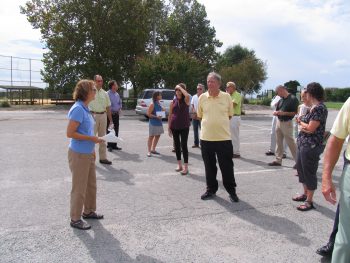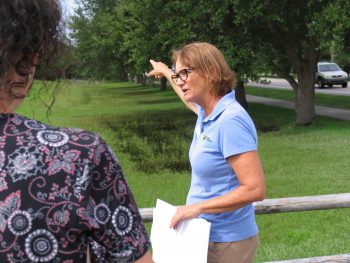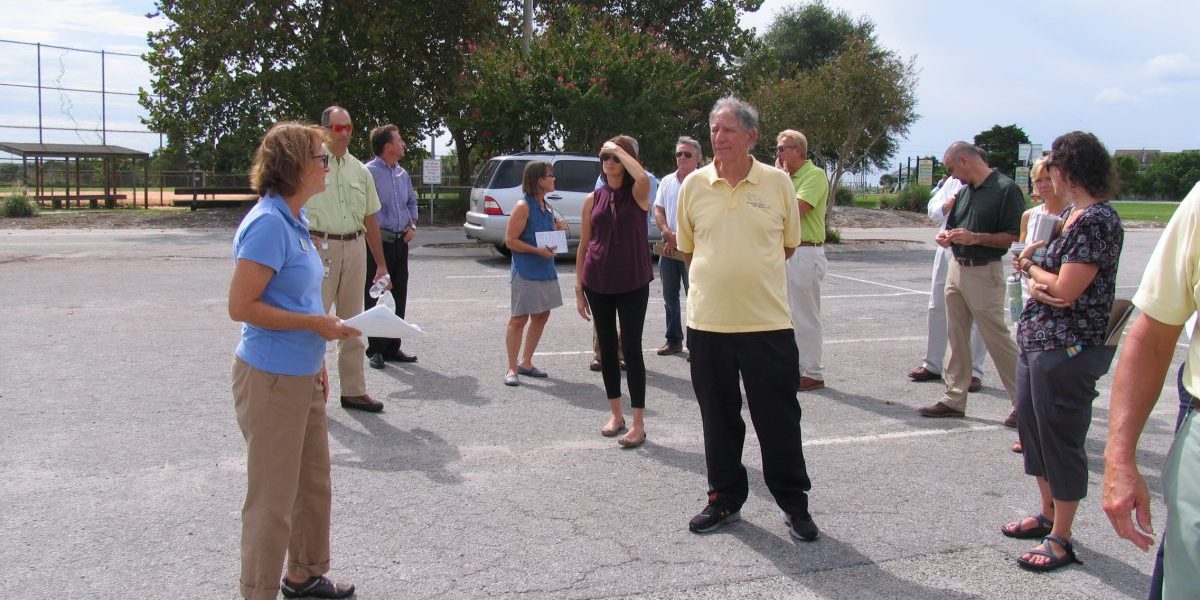Local officials from New Hanover County joined the North Carolina Coastal Federation in Wrightsville Beach on Sept. 27 for a Walk the Loop for Clean Water tour, which highlights low-impact development (LID) techniques that collect and infiltrate stormwater runoff along the John Nesbitt Loop.

The A-Team joined Tracy Skrabal, coastal scientist for the federation, to learn more about low-impact development in New Hanover County.
Tim Burgess, assistant county manager of New Hanover County, took a group of department heads under his supervision, referred to as the “A-Team.” The team holds periodic meetings with Burgess to discuss ways to improve county operations.
The A-Team consists of leaders from the Planning and Inspections, Engineering, Parks and Gardens, Emergency Management, Environmental Management, Library, Cape Fear Museum, Soil and Water Conservation District, North Carolina State University Extension Service and Fire Services departments.
Tracy Skrabal, coastal scientist and southeast regional manager for the federation led the tour, offering information on project costs, effectiveness and maintenance. Larry Sneeden, one of the project engineers, was on hand to answer technical and design questions. The techniques include curb cuts, berms, rain gardens, rainwater harvesting, native landscaping, permeable paving, diverters and infiltration — all techniques that could easily be installed on most properties.
“I think it’s a really good educational opportunity for county leadership so they can take the information back and incorporate what they learned into their own projects,” said Dru Harrison, director of the Soil and Water Conservation District in New Hanover County.

Skrabal discusses the different retrofits around the loop.
The tour provided a great opportunity for the federation to showcase the simple LID projects that have been installed to reduce polluted runoff to county leaders.
“We can do a few of these projects and have some benefits, but if the low-impact development techniques we used can make their way into the designs of county facilities, such as buildings, parking lots and parks, then we can make a significant difference in water quality in the area,” Skrabal said.
The federation is committed to using LID techniques to reduce stormwater runoff from polluting coastal waters. To learn more about the Walk the Loop for Clean Water Tour please visit www.walktheloop.org or contact Tracy Skrabal at 910-509-2838.

